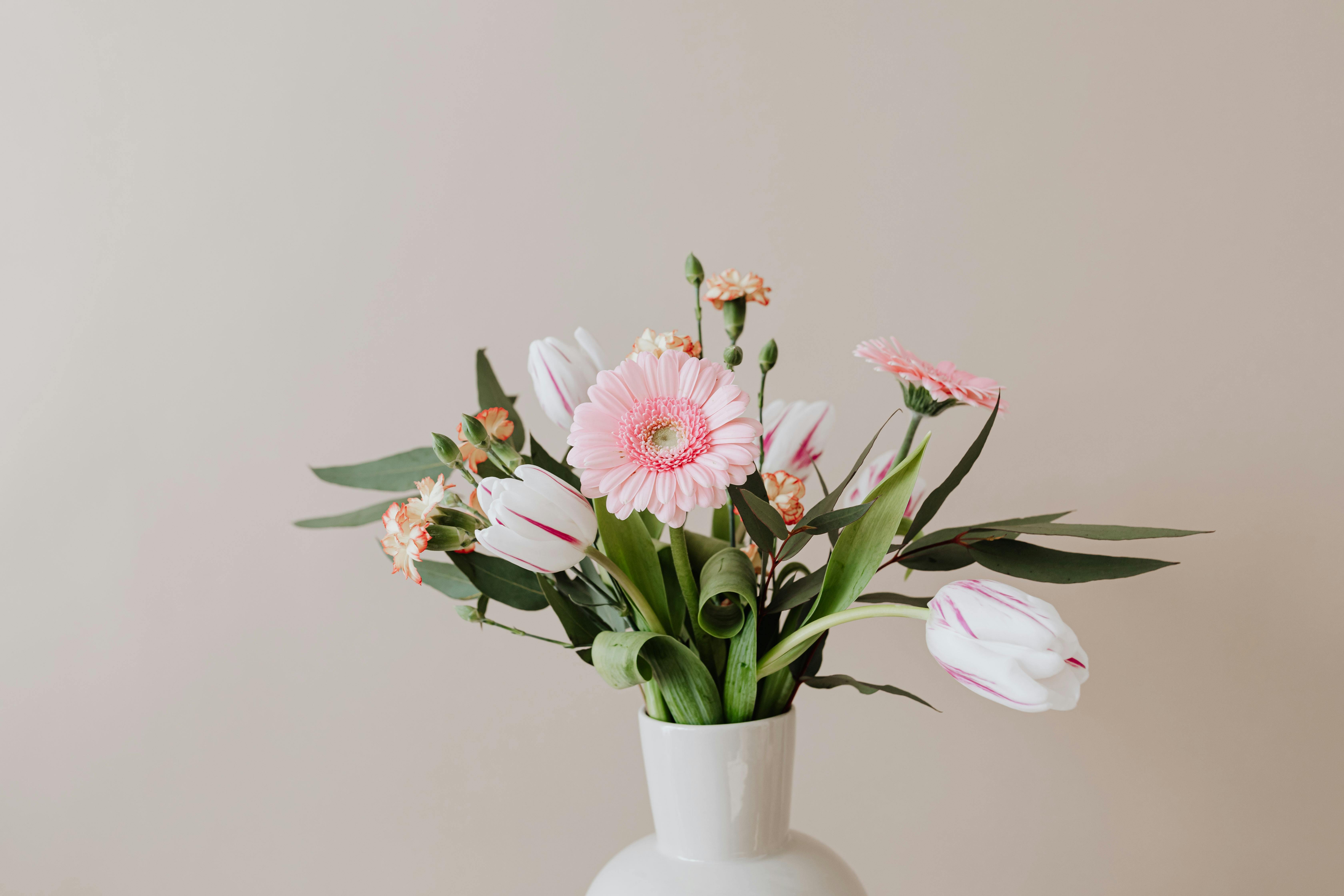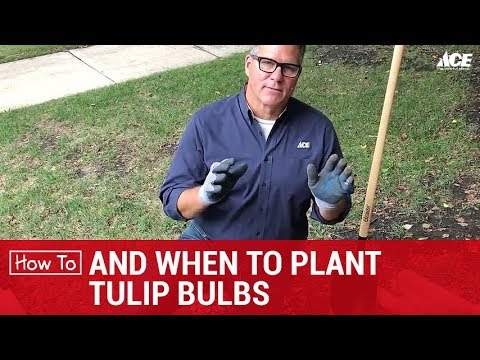Tulips are a beautiful and vibrant addition to any garden. Planting tulip bulbs is a fun and creative way to add life to your outdoor living space. Tulips come in a wide range of colors, shapes, and sizes, making them an ideal choice for any type of garden. Whether you’re looking for a classic white tulip or something more exotic, planting tulip bulbs is an easy and rewarding task. This guide will provide you with all the tips and tricks you need to know in order to successfully plant your tulip bulbs.Preparing the soil for planting tulip bulbs is a crucial step in ensuring a successful and healthy tulip bulb garden. To prepare the soil, begin by loosening the soil in the planting area to a depth of 8-10 inches with a shovel or tiller. Mix in organic compost or manure to improve the soil’s drainage and nutrient content. Be sure to remove large stones or debris from the area before planting the bulbs. Plant tulip bulbs 4-6 inches deep and 6-8 inches apart in well-drained, loose soil. Water thoroughly after planting and mulch with 2-3 inches of bark chips or other organic material to help retain moisture and reduce weed growth.
Choosing the Right Location for a Tulip Garden
Choosing the right location for a tulip garden is an important decision. When selecting a location, you should consider factors such as climate, soil type, and sunlight. The ideal location for growing tulips should have plenty of sunlight and well-drained soil. You may also want to consider how much space you have available and if the area is prone to wind or frost damage. In addition, you should make sure that the area has easy access to water so that your tulips can receive regular watering.
The type of climate in your area will determine which type of tulips you can grow successfully. Tulips prefer cooler climates with mild winters and moderate summers. If you live in an area with extreme temperatures, it is best to choose varieties of tulips that are suited to those conditions. Some varieties may require more care or protection from extreme weather than other types.
Once you have determined the climate and soil type in your area, it is important to consider how much sunlight is available for your plants. Tulips need at least six hours of direct sunlight each day. If there are large trees near your garden, they may reduce the amount of sunlight available for your plants.
Finally, consider if there are any potential problems with wind or frost damage in your area before planting your tulips. Windy areas can cause damage to the flowers, while cold winter temperatures can cause frost damage that could kill off some of the bulbs. Taking these potential risks into account will help ensure that you have a successful tulip garden.
Selecting the Right Kind of Tulip Bulbs
Tulips are a popular flower to grow in the garden, and selecting the right kind of tulip bulbs for your garden is essential for getting a beautiful display. There are several different types of tulips available, each with its own unique characteristics and colors. Selecting the right type of tulip bulb will depend on where you live, what climate you have, and what type of garden you plan to create.
When selecting tulip bulbs, it is important to take into account the climate of your area. If you live in a warm climate, then go for longer-lasting varieties such as ‘Darwin’ or ‘Triumph’ tulips. These varieties will stay in bloom longer than other types and can withstand higher temperatures. If you live in a cooler climate, then opt for shorter-lasting varieties such as ‘Single Early’ or ‘Double Late’ tulips.
In addition to climate considerations, it is important to select bulbs that are suited to the type of soil in your garden. Tulips prefer soils with good drainage and plenty of organic matter. If you do not have access to these types of soils, then try planting bulbs that are more tolerant of heavy soils or sandy soils.
Finally, when selecting tulip bulbs it is important to take into account the size and shape of your garden when choosing which varieties to plant. Taller varieties such as ‘Parrot’ or ‘Lily Flowered’ may be better suited for larger gardens with plenty of space, while shorter varieties such as ‘Species’ or ‘Darwin Hybrid’ may be better suited for smaller gardens where space is limited.
By taking into account all these factors when selecting your tulip bulbs, you can ensure that you get a beautiful display in your garden each spring!
Digging and Spacing Holes for Planting Tulip Bulbs
Planting tulip bulbs is a rewarding experience. However, it is important to know the correct way to dig and space the holes in order to ensure that your plants grow and bloom properly. Before you begin, it is important to know what size hole you should dig for each tulip bulb. Generally, holes should be dug about 8 inches deep and should be wide enough to comfortably fit the bulb without cramping its roots.
Once you have determined the size of hole needed for each bulb, it’s time to start digging. The best way to do this is with a spade or shovel. Begin by inserting the spade into the soil at an angle and then turning it over so that it creates a trough in the ground. You can then use this trough as a guide when digging the rest of your holes. If you are planting multiple tulip bulbs, make sure that they are spaced out evenly so that they have room to grow and bloom properly.
After all of your holes are dug, it’s time to start planting your tulip bulbs. Depending on how many bulbs you have purchased, you may need to break them apart before planting them in separate holes. When placing them in the ground, make sure that the pointed end of the bulb is facing up towards the sky and that each bulb is firmly placed in its hole before covering it with soil.
Once all of your bulbs are planted, water them thoroughly and cover them with mulch or compost if desired. With proper care and attention, your tulips should begin sprouting within a few weeks! Digging and spacing holes correctly for planting tulip bulbs will help ensure a healthy display of vibrant flowers come springtime!
Planting Tulip Bulbs at the Proper Depth
Planting tulip bulbs at the proper depth is a key factor in ensuring the success of a tulip garden. Planting tulip bulbs too deep can cause them to rot, while planting them too shallow can lead to poor flowering. In general, tulips should be planted with the pointed end facing up and at a depth of around 8-10 cm (3-4 inches). This will help ensure that the bulb has enough room to grow and establish itself.
When planting tulips, it is important to make sure that each bulb is placed in the ground firmly but not too tightly. Digging a hole that is slightly wider than the bulb will help to ensure that it can settle in properly and receive enough water and nutrients. It is also important to add some compost or organic matter when planting tulips as this will help improve drainage and soil fertility.
Once planted, it is important to water the bulbs regularly so that they do not dry out before they have had a chance to establish themselves. Once the plants have grown up, they can then be mulched with organic matter such as straw or wood chips which will help keep them moist during hot weather. With proper care and attention, tulips can provide beautiful blooms throughout springtime in many climates.

Adding Fertilizer and Water to Tulip Bulbs After Planting
Adding fertilizer and water to tulip bulbs after planting is important for ensuring healthy growth and blooming. To ensure the best results, choose a fertilizer specifically designed for flowers or bulbs. Before applying the fertilizer, you should break up any large clumps of soil around the bulb so that the fertilizer can reach the roots. Once the soil has been prepared, sprinkle a thin layer of fertilizer around each bulb evenly and then gently water it in. The amount of fertilizer used will depend on your particular brand, but generally use about a tablespoon per bulb.
When watering your tulips after planting, it’s important to do so carefully. Water slowly and deeply so that the moisture can penetrate down to the root area of each tulip bulb. You don’t want to flood or soak them as this can cause rot or other damage to the bulbs. When finished watering, check that there is no standing water near any of your tulips as this can lead to root rot or mold development in your plants.
It’s also important to be aware of how much light each tulip bulb is getting when watering it after planting. Too much direct sunlight can cause them to dry out too quickly, while too little light may leave them soggy and prone to rot or disease development. To ensure optimal growth, make sure your tulips get at least six hours of direct sunlight per day during their growing season.
By adding fertilizer and water properly after planting tulip bulbs, you will help ensure healthy growth and blooming in your garden throughout the season!
Mulching Around the Garden Bed After Planting
Mulching around the garden bed after planting is an important step in helping plants to thrive. Mulch helps to retain moisture in the soil and protects roots from extreme temperatures. It also adds nutrients to the soil, allowing for optimal growth of plants. In addition, it can also help to prevent weed growth and reduce the amount of water lost through evaporation. When mulching around a garden bed, it is important to choose a material that will be effective in providing these benefits while not causing any damage to the plants or their roots.
Organic mulches such as wood chips, straw, or grass clippings are great options as they break down over time and add nutrients back into the soil. Inorganic mulches like gravel or plastic can also be used but must be monitored more closely for adequate moisture retention and potential root damage. It is important to keep mulch materials away from plant stems as this can lead to rot and other diseases.
When applying mulch around your garden bed it is important to keep a few inches away from plant stems and apply a layer that is two-three inches deep. This will provide enough coverage for optimal benefits without suffocating plants. Additionally, it is important to monitor any mulch applied throughout the growing season and reapply if necessary. This will ensure that your plants continue to receive adequate moisture and protection from extreme temperatures throughout their growing season.
Mulching around the garden bed after planting is an effective way of providing protection and nutrient support for your plants. Choosing an appropriate mulch material, keeping it away from plant stems, applying a two-three inch layer, and monitoring throughout the growing season will help ensure optimal plant health for years to come!
Maintaining Proper Care of a Tulip Garden
Tulips are a beautiful and vibrant flower that can bring life to any garden. Taking care of a tulip garden requires some special attention in order to keep them healthy and blooming throughout the season. Here are some tips to ensure your tulip garden is well maintained.
Firstly, tulips need plenty of sunlight in order to thrive. Make sure the area is sunny and not overly shaded, as this can lead to weak stems and fewer flowers.
Tulips also need regular watering, especially during their growing season. Water them once or twice a week, ensuring the soil remains moist but not soggy. Too much water can cause the bulbs to rot, so be careful not to over-water them.
Fertilizing is also important for keeping your tulips healthy and blooming throughout the season. Use a balanced fertilizer once or twice during the growing season, following package instructions for application rates and timing.
Deadheading, or removing faded flowers from your plants, will help encourage new blooms throughout the season. Simply pinch off faded flowers at the base of their stem using your fingers or pruning shears for large clumps of flowers.
Finally, when temperatures drop below freezing in winter months, make sure your tulip bulbs are well covered with mulch or other protective material such as straw or leaves. This will help protect them from harsh winter weather and ensure they come back strong in springtime! With these simple tips you’ll be sure to have a beautiful and healthy tulip garden all season long!

Conclusion
Planting tulip bulbs is a great way to get started with flower gardening. It is a simple and fun activity that can be done with your family and friends. By following the steps above, you can make sure that your tulips will blossom beautifully in the springtime. Make sure to choose the right location for your tulips, prepare the soil properly, and plant them at the right depth and distance apart. With some care and maintenance, you can enjoy beautiful blooms throughout the growing season.
Tulips are an iconic symbol of springtime and bring a splash of color to any garden. All it takes is a little bit of patience and preparation to ensure that your tulips will thrive for years to come. So why not get started today? Who knows – you may just find yourself falling in love with this popular flower!

